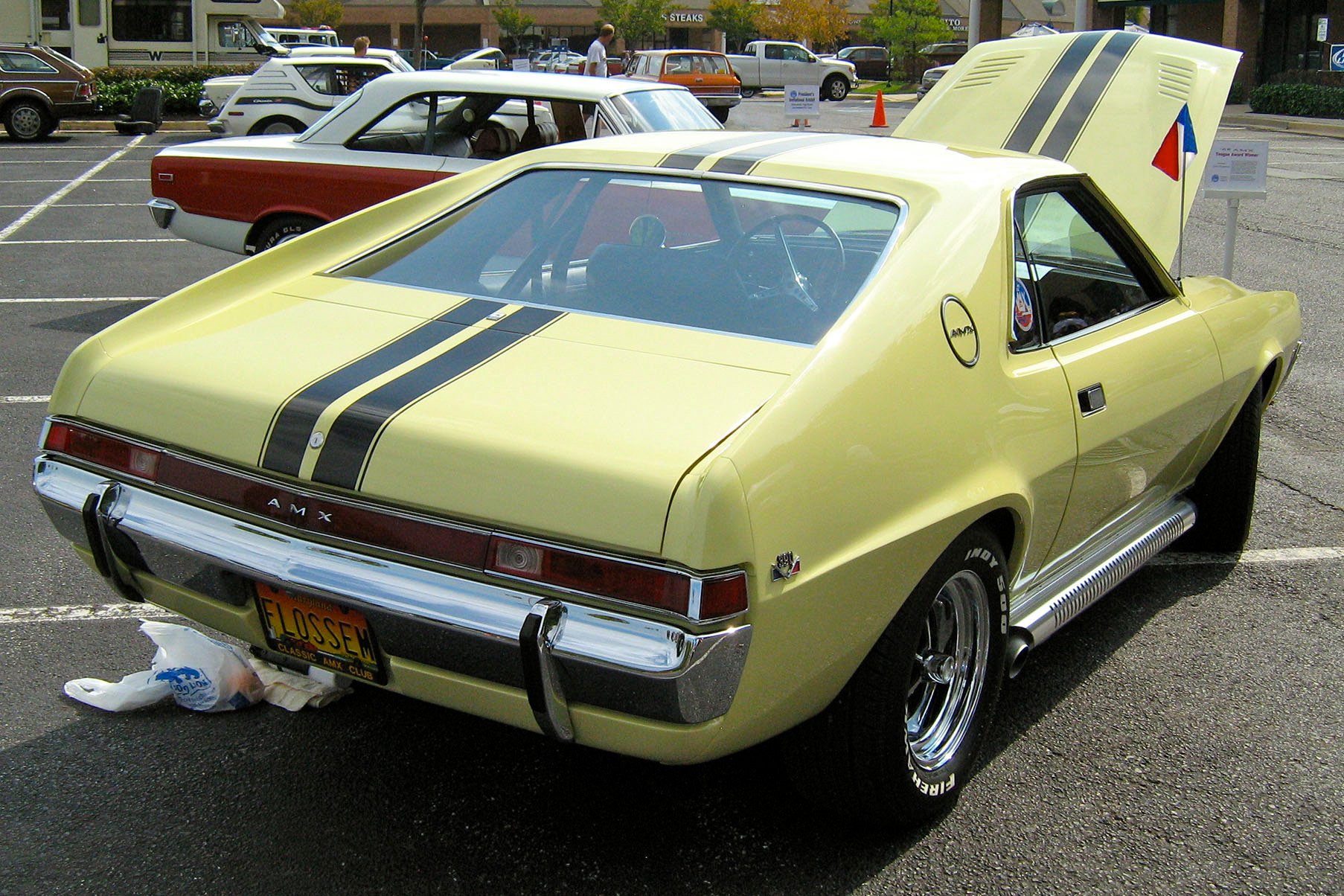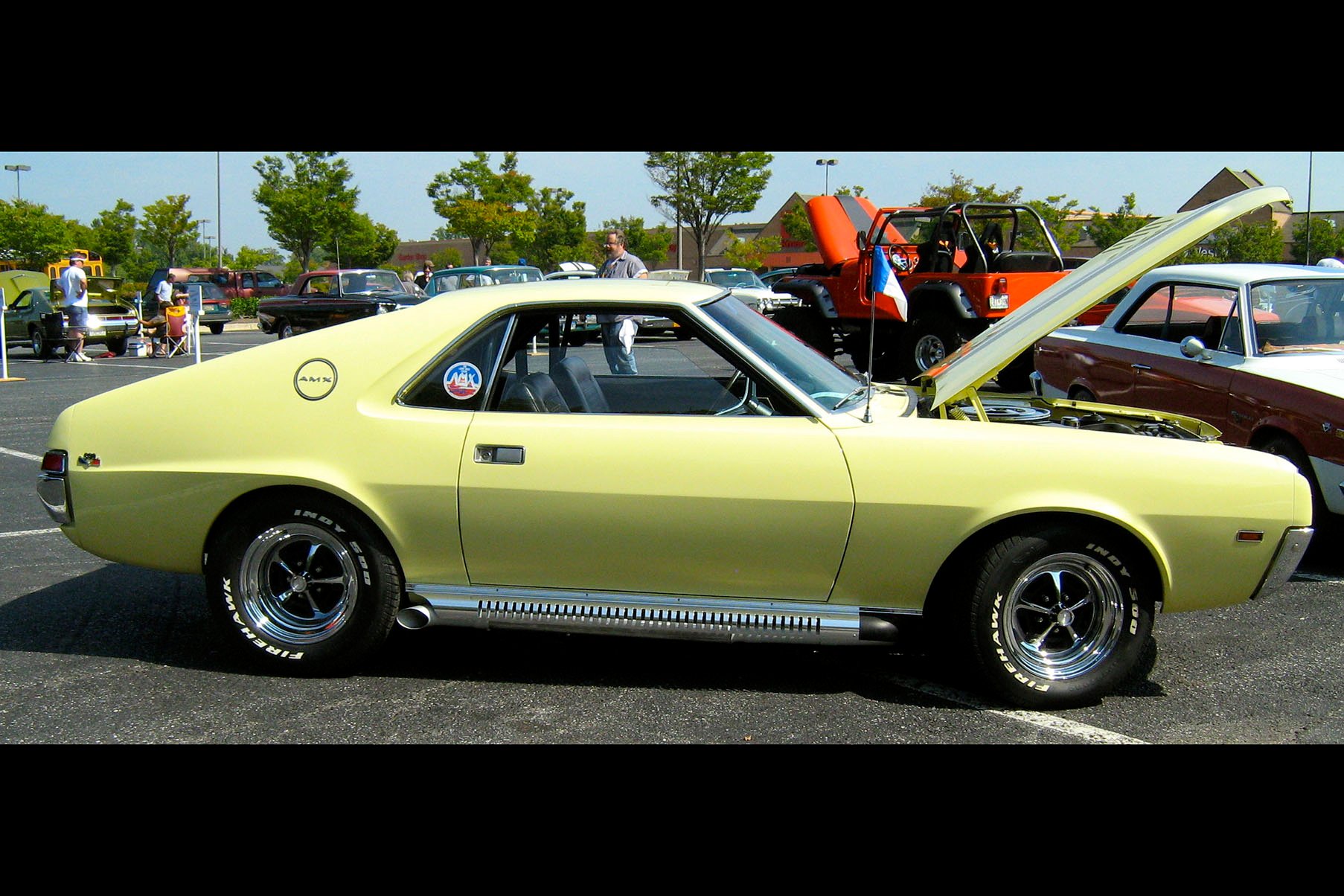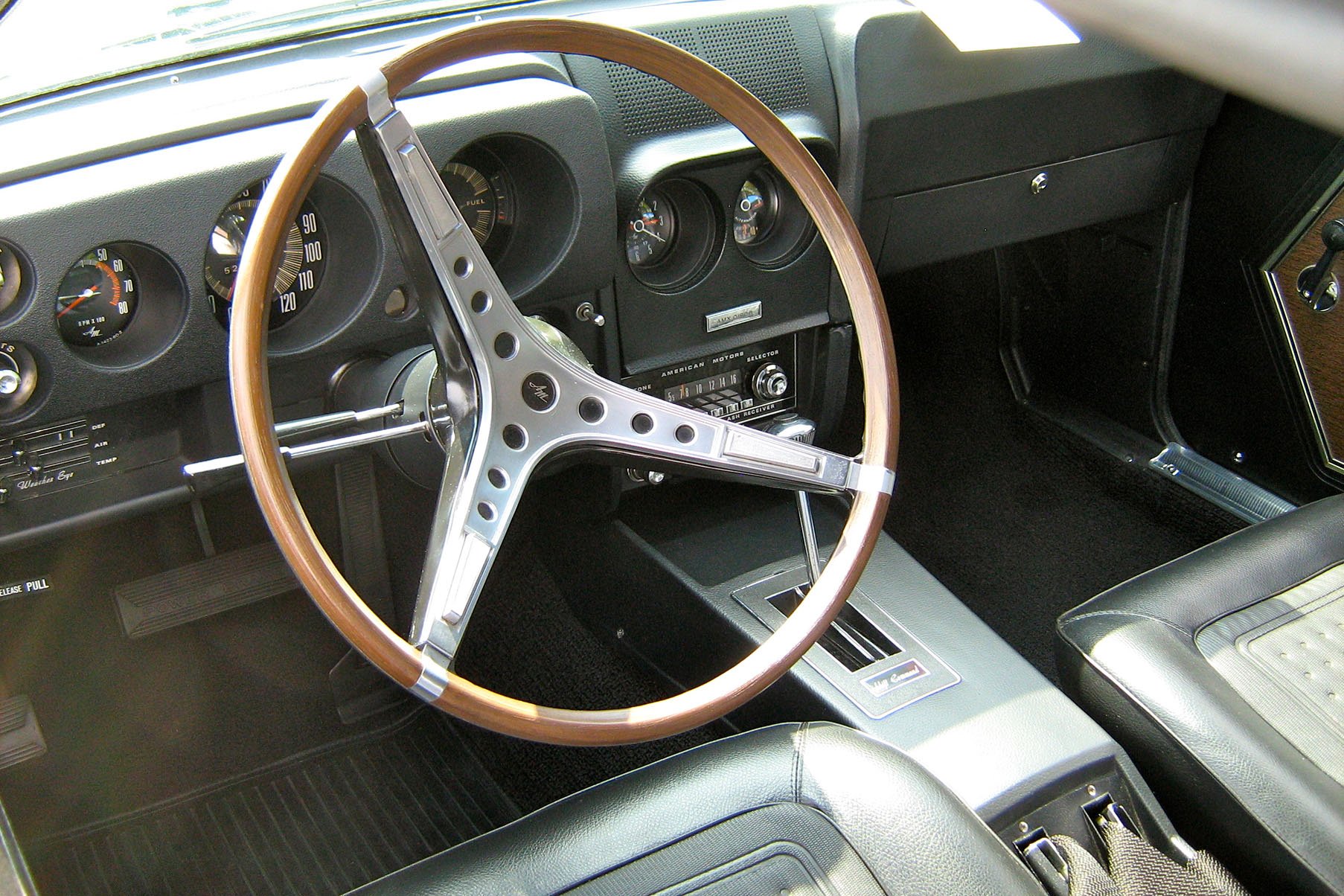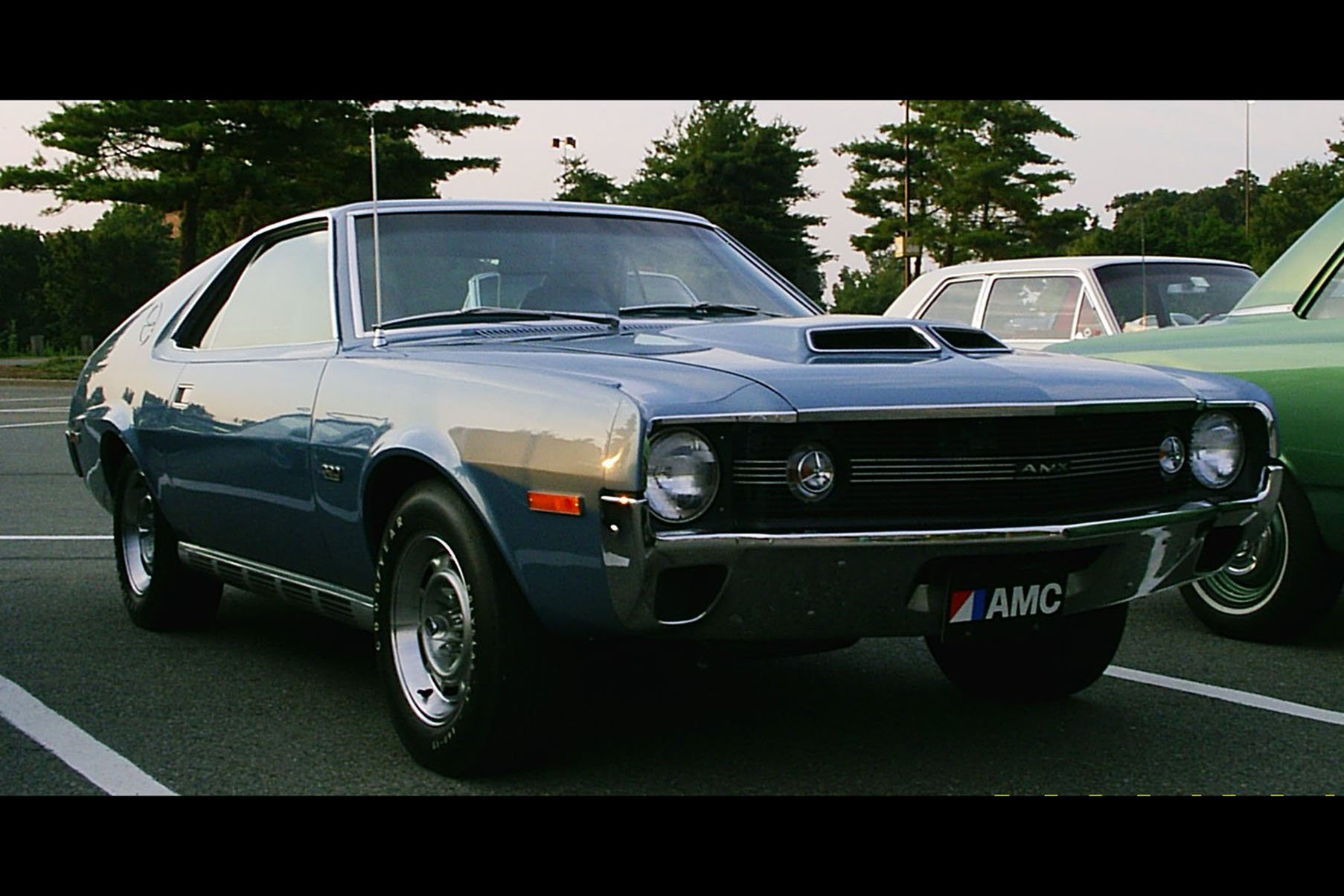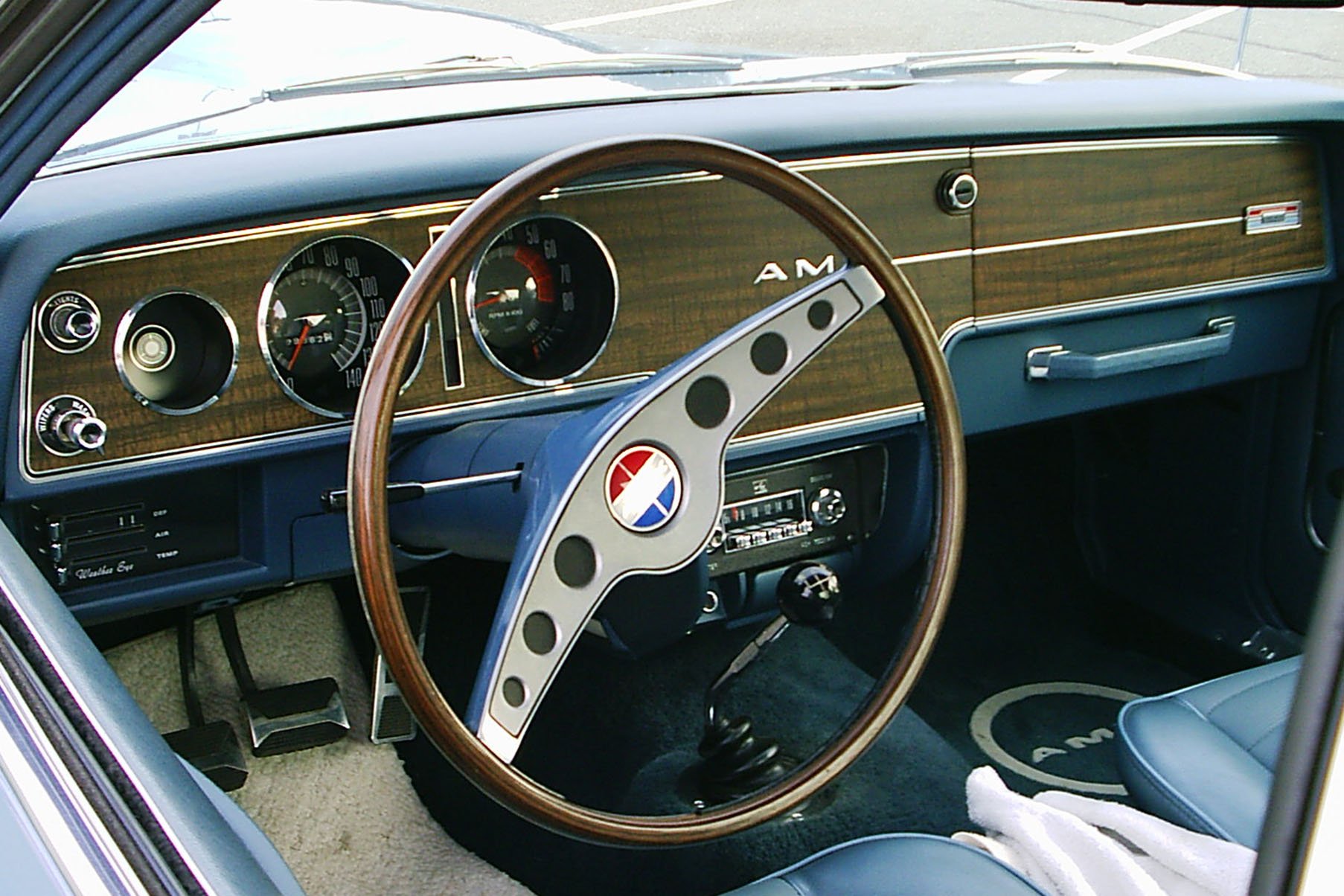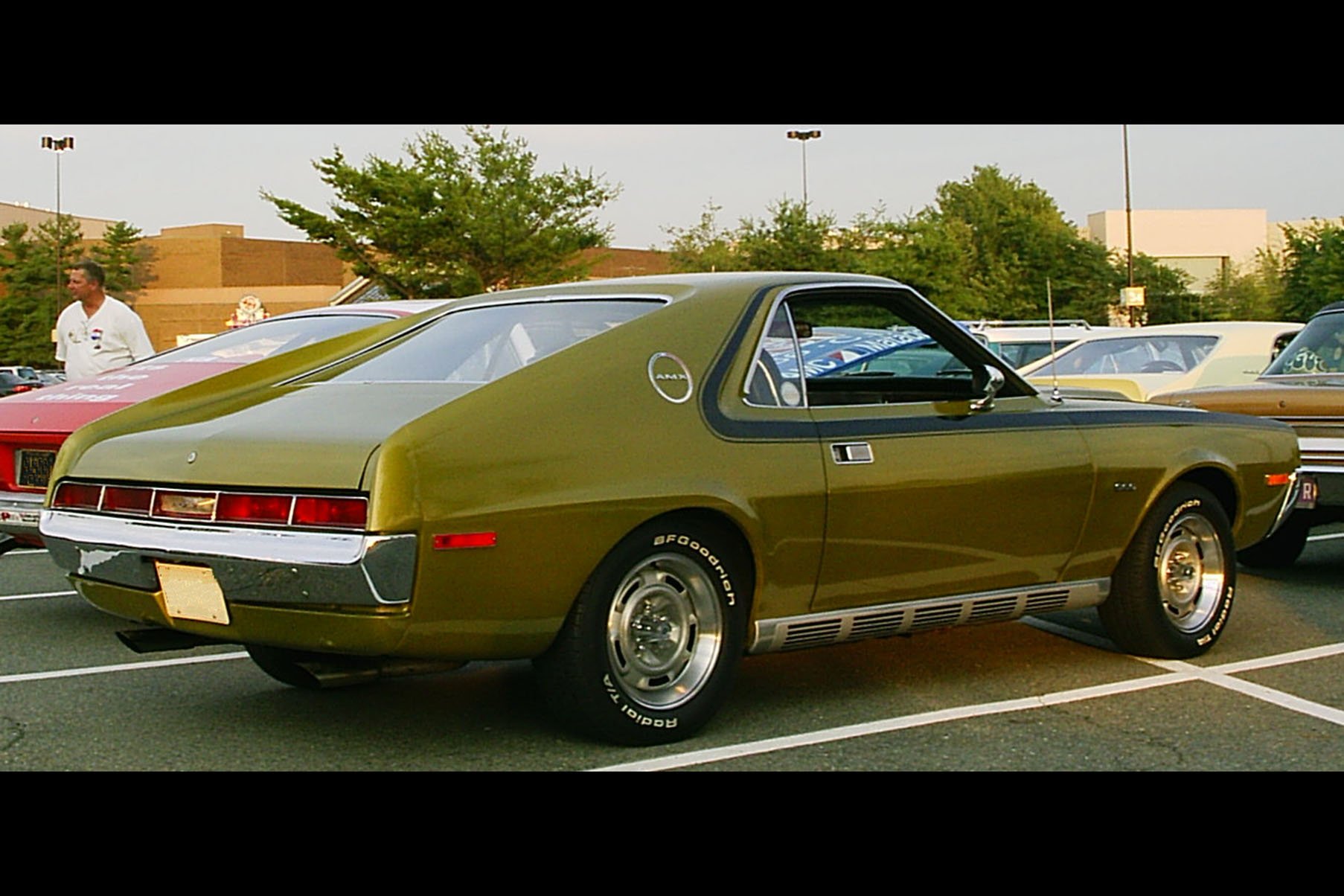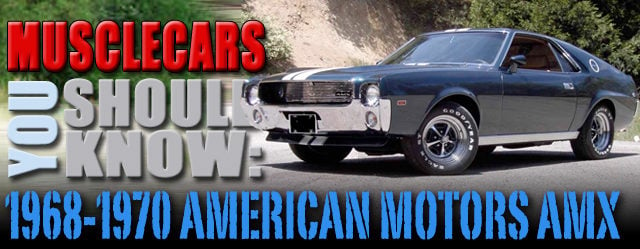 The shockwaves that were sent across the automotive industry by the introduction of the Pontiac GTO for the 1964 model year couldn’t be ignored, and when Ford’s new Mustang proved to be an absolute sales juggernaut the following year, automakers quickly realized that if they didn’t get in on this new trend, they were simply leaving money on the table.
The shockwaves that were sent across the automotive industry by the introduction of the Pontiac GTO for the 1964 model year couldn’t be ignored, and when Ford’s new Mustang proved to be an absolute sales juggernaut the following year, automakers quickly realized that if they didn’t get in on this new trend, they were simply leaving money on the table.
The American Motors Corporation was a bit of an unlikely character to enter the high performance game, though. AMC was founded in 1954 as a result of a merger between the Hudson Motor Car Company and the Nash-Kelvinator Corporation. While the company initially struggled to get a foothold in the market, AMC started to register on the public’s radar when a Rambler won the 1959 Mobil Economy Run, a fuel efficiency competition conducted by real-world road testing. Accordingly, this set AMC’s main market focus on entry-level economy cars, and by 1960, AMC was the third most popular automotive brand in the United States behind Ford and Chevrolet.
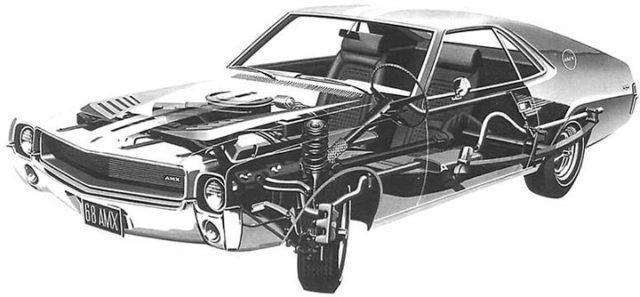
The AMX was not the first performance-minded AMC model out of the gate. The Javelin would debut four months previous to the AMX, which makes sense considering that the latter rides on a shortened version of the Javelin’s chassis.
But when Ford sold nearly 22,000 Mustangs on April 17, 1964 – the day the car debuted – the rest of the industry took notice, AMC included. By early 1965 AMC was working on mockups of a new pony car known as the Javelin, as well as another two-seater model dubbed the American Motors eXperimental, or AMX.
The Birth Of An Unlikely Sports Car
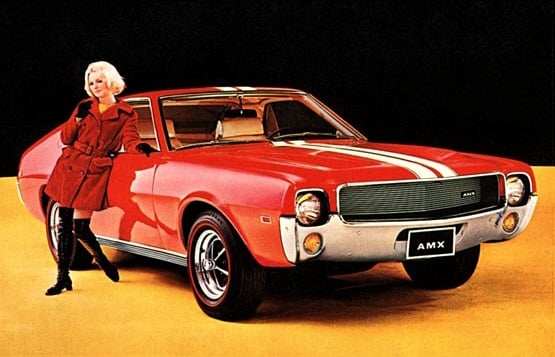
After a decade of cultivating economy car buyers, AMC spent much of the mid-1960s reinventing their image as a youth-oriented brand.
The AMX rode on a version of the Javelin’s chassis that had been shortened substantially, resulting in something that more closely resembled a sports car layout than a traditional musclecar, and AMX’s wheelbase was in fact an inch smaller than the Chevrolet Corvette.
By 1966 the tides in the industry had clearly shifted, and AMC was anxious to shed its stodgy economy car image and replace it with a more lively and performance-oriented one. That year, the company would bring a pair of “Project IV” prototypes with it to tour the auto show circuit, one a fiberglass-bodied two seater AMX and the other a four seater AMX II.
The two seater AMX was well received at the shows, and hoping to strike while the iron was still hot, AMC moved quickly to put the car into production.
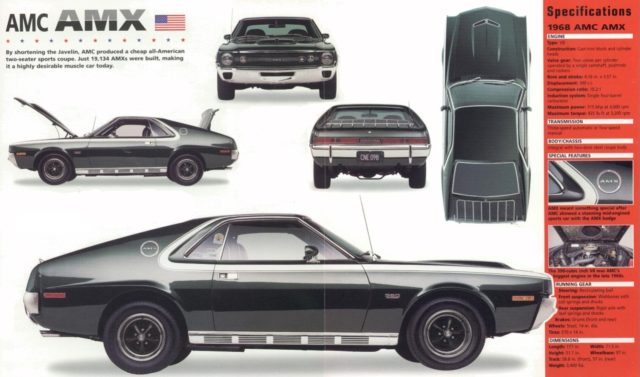
With a wheelbase of just 97 inches, the AMX was dimensionally closer to a Corvette (and, in fact, smaller) than it was to pony cars like the Mustang and Camaro. The diminutive two-seater was also much lighter than those 2+2 models, with a curb weight of just over 3000 pounds.
Introduced to the press in production form on February 15th, 1968 at Daytona International Speedway, the company made it clear that they were serious about performance with this new car, demonstrating high speed runs in excess of 130 mph around the course.
Though its looks may have been polarizing to some, the performance of the AMX was undeniable. With a wheelbase of just 97 inches, the AMX was hundreds of pounds lighter than typical pony cars. AMC also had a trio of V8 engines to equip it with, starting with a four-barrel 290ci mill that made 225 horsepower. The mid-range offering was a 343-cube motor that had a lively 280 horsepower, but the star of the roster was undoubtedly the new 390 cubic inch big block V8.
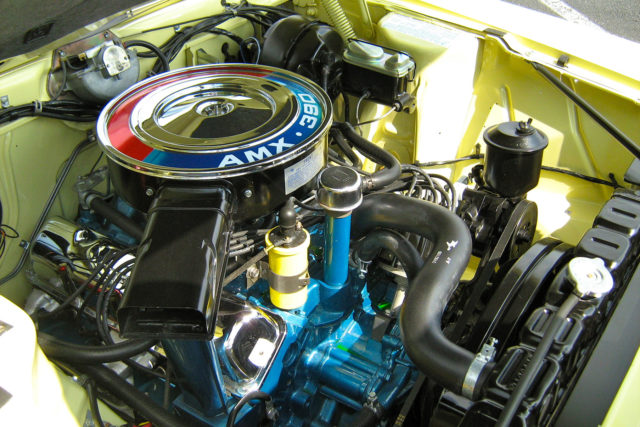
When the AMX debuted in 1968 it came packing some legitimate performance options, including the top-tier 390 big-block V8, which boasted a forged crankshaft and connecting rods. Image: Wiki Commons
Sporting a forged crank and connecting rods and a 10.2:1 compression ratio, the 390 V8 offered 315 horsepower and 425 pound-feet of torque, and gave the AMX musclecar levels of straight line thrust coupled with the nimble handling of a sports car. A Borg Warner four-speed manual gearbox was standard while a three-speed automatic was optional.
The AMX could be had with the Go Package performance option in its debut year as well, which added a “Twin Grip” differential, heavy duty suspension and cooling, upgraded wheels and tires, and power assisted front disc brakes. A number of additional dealer-installed performance parts could be ordered as well, known as the “Group 19” parts.
The AMX's short rear deck and fastback roofline gave it a somewhat unusual look versus the bold styling coming from Detroit's Big Three at the time, but the performance of the AMX couldn't be ignored.
The performance credentials of AMC’s new two seater were further bolstered by the fact two modified AMXs had been brought to Goodyear’s test track in Texas the previous month and, with land speed record holder Craig Breedlove at the helm, set 106 world speed and endurance records.
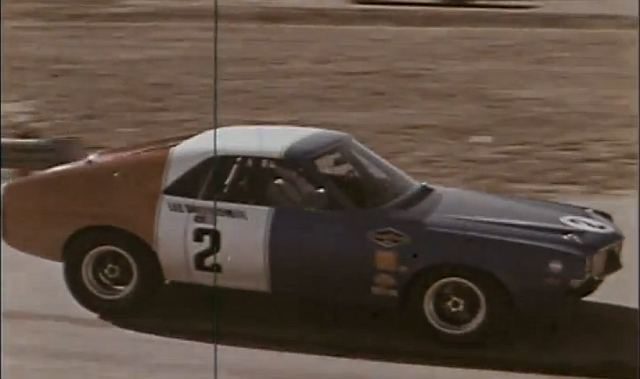
The record setting AMXs differed substantially from the garden-variety models sold to the general public. The engine of the 390-equipped car was massaged out to 397-cubes and given a complete rebuild with a race-spec camshaft, exhaust system, intake manifold, and other engine modifications, while the chassis received heavy duty shocks and springs to go with the panhard bar that was installed. Magnesium wheels and Goodyear race tires replaced the factory rolling stock, and additional aero elements were added to the body to improve high-speed stability.
Though they shared few of the modifications done to the record-setting cars, a very limited number of “Breedlove” AMXs were said to have been sold that year to commemorate the event. These production models featured the red, white, and blue paint scheme of the cars used at the Goodyear test track and were equipped with the 290ci V8 and a four-speed manual transmission.
Though 1969 was largely a carry-over year, a few important tweaks were included. Starting in the first month of 1969, all manual transmission-equipped AMXs received a Hurst shifter, and a “Big Bad” paint option became available, which offered high impact paint hues of orange, blue and green with color-matched front and rear bumpers.
1970 brought some revision to the AMX’s look, with a new front end that featured a domed hood with a ram-air system as part of the Go Package component group as well as a redesigned grille, headlight, and bumper layout. Along with some tweaks to the rear, the changes added two inches to the overall length of the car, though its wheelbase remained unchanged. A new “Shadow Mask” satin paint treatment for the hood, which traveled the tops of the fenders and wrapped around the window frames, could be optioned as well.
The AMX started to really hit its stride in 1970 in terms of its aesthetic, with a revised front and rear complimented by an optional ram air hood and an all-new interior. Unfortunately the AMX's status as its own two-seater model would end after that year, and the badge would be applied to the top-spec Javelin pony car for the following four model years. Images: Wiki Commons
The base 290ci V8 was dropped altogether and a new 360-cube, 290 horsepower V8 replaced the 343ci mill, while the 390 received a new set of cylinder heads that bumped output to 325 hp. Inside, the AMX got a new interior that was more upscale, with a wood-grained dashboard and optional leather seating.
Here And Gone
Though well received by the automotive press and boasting impressive performance figures, the two seater AMC AMX would bow out after the 1970 model year. However, the AMX moniker would live on, denoting the most performance-focused version of the Javelin available for 1971.
Hot off the heels of a major upset in the intensely contested Trans Am series, where the Mark Donohue-piloted Javelin had taken home the title and bested the likes of Ford, Chevrolet and Chrysler, the 2+2 Javelin-AMX was marketed as “the closest thing you can buy to a Trans-Am champion,” and featured a fiberglass cowl induction hood and improved aero at the front and rear, while the optional 335 horsepower 401ci V8 could propel the car down the quarter mile well into the 14 second range.
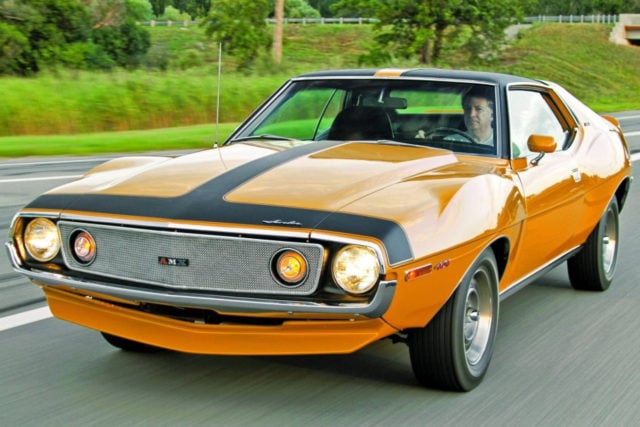
Though the two-seater AMX was gone after 1970, the name would live on as the most performance-focused version of the Javelin. AMC’s pony car had plenty of street cred in its own right though, having won the Trans Am championship in 1970 among a well-funded and factory-backed field of Mustangs, Challengers, Camaros and others. Images: Hemmings
But by 1971 the writing was already on the wall for the musclecar at large. Though the Javelin-AMX would solider on for next few years with progressively reduced performance, both the Javelin and the AMX name would bow out after 1974, while the AMC brand as whole would cease operations in 1988.
Fortunately, AMC managed to build more than 19,000 examples of the two-seater AMX during its three-year run. While that figure is dwarfed by the production numbers of Camaros, Mustangs, and Challengers of the day, it’s still enough to keep AMXs relatively accessible in 2017, though pricing for solid, well optioned examples continues to rise steadily.



